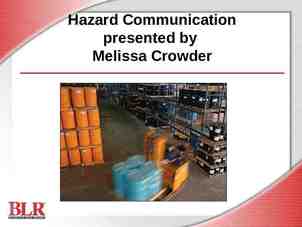MIS 210 Information Systems I Lecture 4: Data Modeling
27 Slides242.50 KB
MIS 210 Information Systems I Lecture 4: Data Modeling Process Modeling MIS 210 Fall 2004
Data Models MIS 210 Fall 2004
Entity-Relationship Diagrams Data-oriented approach – uses the data and the relationships among data to model requirements – purpose is to show the data used in the system – good for modeling data stores from a DFD A representation of organizational data. – Shows the rules about the meanings and interrelationships among the data. MIS 210 Fall 2004 Sylnovie Merchant, Ph. D.
E-R Diagrams Defined – A graphical representation of an E-R model. – E-R model a detailed, logical representation of the entities, associations, and data elements for an organization or business area. MIS 210 Fall 2004
E-R Symbols Entity Attribute Relationship MIS 210 Fall 2004
Terminology Entity – a “thing” in the real world – has an independent existence Attribute(s) – One specific piece of information about a thing – a property of the entity – has a value (or value set or domain) Cardinality – the number of instances of an entity that are associated with another entity – a single occurrence of an entity MIS 210 Fall 2004
Data Entities An Entity is a thing the users need to know (i.e, record) something about. MIS 210 Fall 2004
Types of Things MIS 210 Fall 2004
Types of Attributes Identifier (primary key / key attribute) – An attribute (or attributes) selected as the unique, identifying characteristic for an entity. Foreign Key – An attribute (or attributes) in one database table that is the primary key in another database table MIS 210 Fall 2004
Attributes and Their Values All videos/DVDs have the following attributes: Product ID number Product Name Product Description Category ID Supplier ID Serial Number MIS 210 Each video/DVD has a value for each attribute: 1 Woodstock Concert Other WRNRBR DVD19925C1 Fall 2004
Relationships Relationship – Naturally occurring association among specific things – Occur in two directions – Cardinality/multiplicity MIS 210 Fall 2004
Relationships Degree of Relationship – number of entities that participate in that relationship Unary (recursive) – degree one – A relationship between instances of one entity. Binary – degree two – A relationship between instances of two entities Ternary – A relationship between instances of three entities MIS 210 Fall 2004
Cardinality of Relationships MIS 210 Fall 2004
Relationships and Cardinality MIS 210 Fall 2004
Trucking .One Approach *Truck ID Volume Weight Truck 1 makes 1 m Trips 1 delivers to m Retail Stores carries *Shipment Number Shipment Volume Weight Destination MIS 210 m Shipment stored at m Fall 2004 m Warehouses
Trucking .Another Approach Truck ID Volume Weight Truck 1 makes 1 m Trips 1 delivers to m Retail Stores carries m Shipment Number Shipment Volume Weight Destination MIS 210 Shipment stored at m Fall 2004 m Warehouses
Data Dictionary MIS 210 Fall 2004
Data Dictionary Defined “ the data dictionary collects and coordinates specific data terms, and it confirms what each term means to different people in the organization.” Kendall & Kendall MIS 210 Fall 2004
Data Dictionary (aka, Project Repository) Repository for all primitive-level data structures and data elements within a system. Use information from DFDs or ERDs to create the DD DD details each of the data items, data flows, processes, etc. in a system For example: DD entry for data items would show characteristics such as size, type, description, ranges, etc. MIS 210 Fall 2004 Sylnovie Merchant, Ph. D.
Process Models MIS 210 Fall 2004
Process Modeling Focus on the internal structure and processes in the DFD Most popular models – Structured English – Decision Tables – Decision Trees MIS 210 Fall 2004
Structured English Form of English used to specify the processes in a DFD Makes use of nouns and action verbs Similar to pseudocode MIS 210 Fall 2004
Structured English Example End of Month Processing DO FOR EACH INVENTORY ITEM COUNT STOCK IN STOCK ROOM ENTER COUNT ON INVENTORY SHEET END DO MIS 210 Fall 2004
Decision Tables Lays out the logic of complex problems where there are multiple actions based on multiple decisions. Four components – – – – conditions decision rules actions action entries MIS 210 Fall 2004
Decision Tables The total possible number of decision rules represents the total possible combinations, or permutations, of the condition values For example, for yes or no values: number of decision rules 2n For three conditions with yes or no values number of decision rules 2n 23 8 MIS 210 Fall 2004
Decision Tables For a range of values – example, age: 1 18 to 20, 2 21-30, 3 31-40, 4 41-50, 5 50 or over – five (5) values for this condition What if there are a combination of different values – yes or no values – five values – total possible values 2 x 5 10 MIS 210 Fall 2004
Decision Trees A graphical representation of a decision structure. Difficult to use for a complex situation. MIS 210 Fall 2004
































